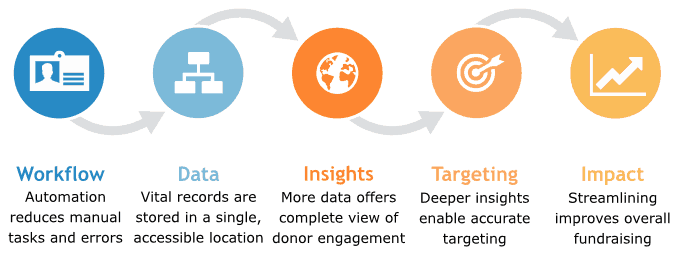For profit organizations have long embraced technology – specifically sophisticated CRM systems – to capture data and help them better engage, communicate and enhance relationships with their customers.
This is an area where nonprofits can reap significant benefit by having the right tools, the right people to utilize them, and smart business rules that help them quickly leverage the data they’re collecting.
All too often, unfortunately, nonprofits opt for the cheapest technology solutions because, well, they’re cheap. This is a result of what is known as the nonprofit starvation cycle.
This particular manifestation of the problem begins when an organization selects a technology solution that is the lowest cost, without understanding completely whether this cheap tool can actually do for them what they need it to. It’s further complicated by the fact that many organizations, even when they purchase the lowest cost solution, don’t plan for the need to invest in training, ongoing maintenance and upgrades over time.
Rather than having a tool that enhances their ability to engage supporters, raise revenue and increase mission impact, decisions like this often saddle nonprofits with ineffective technology solutions that make getting the work done more difficult, resulting in less revenue raised, fewer donors engaged, and a limited ability to deliver on their mission objectives.
But this doesn’t have to be the case…
My friends over at Software Advice recently published their 2015 Fundraising Management Report outlining the nonprofit technology landscape and the value for nonprofits of investing in technology solutions. Their findings will provide you with the tools, the insights, and the industry benchmarking you need in order to convince your board and CEO to invest strategically in new technology tools.
Cheers!
Andrew
